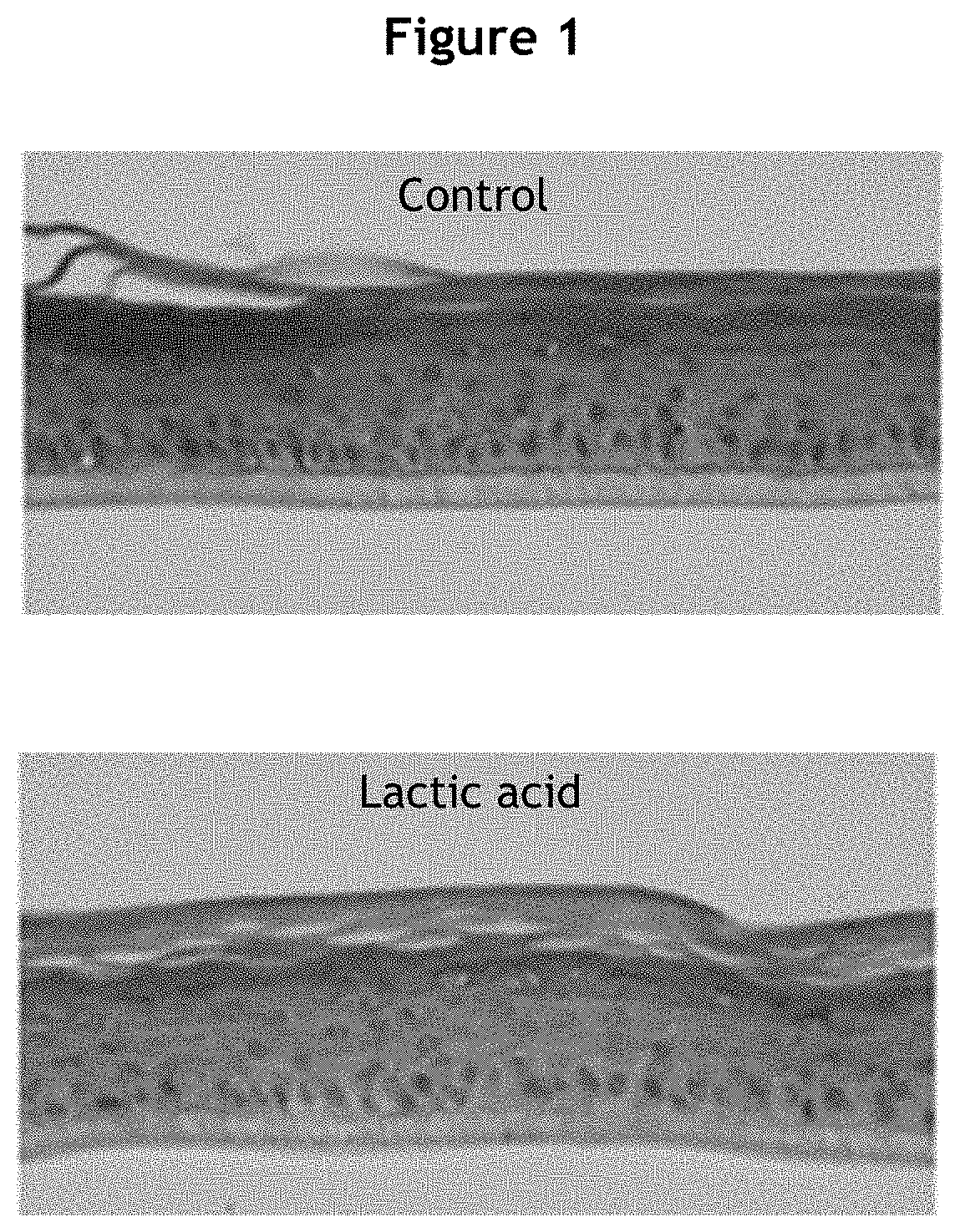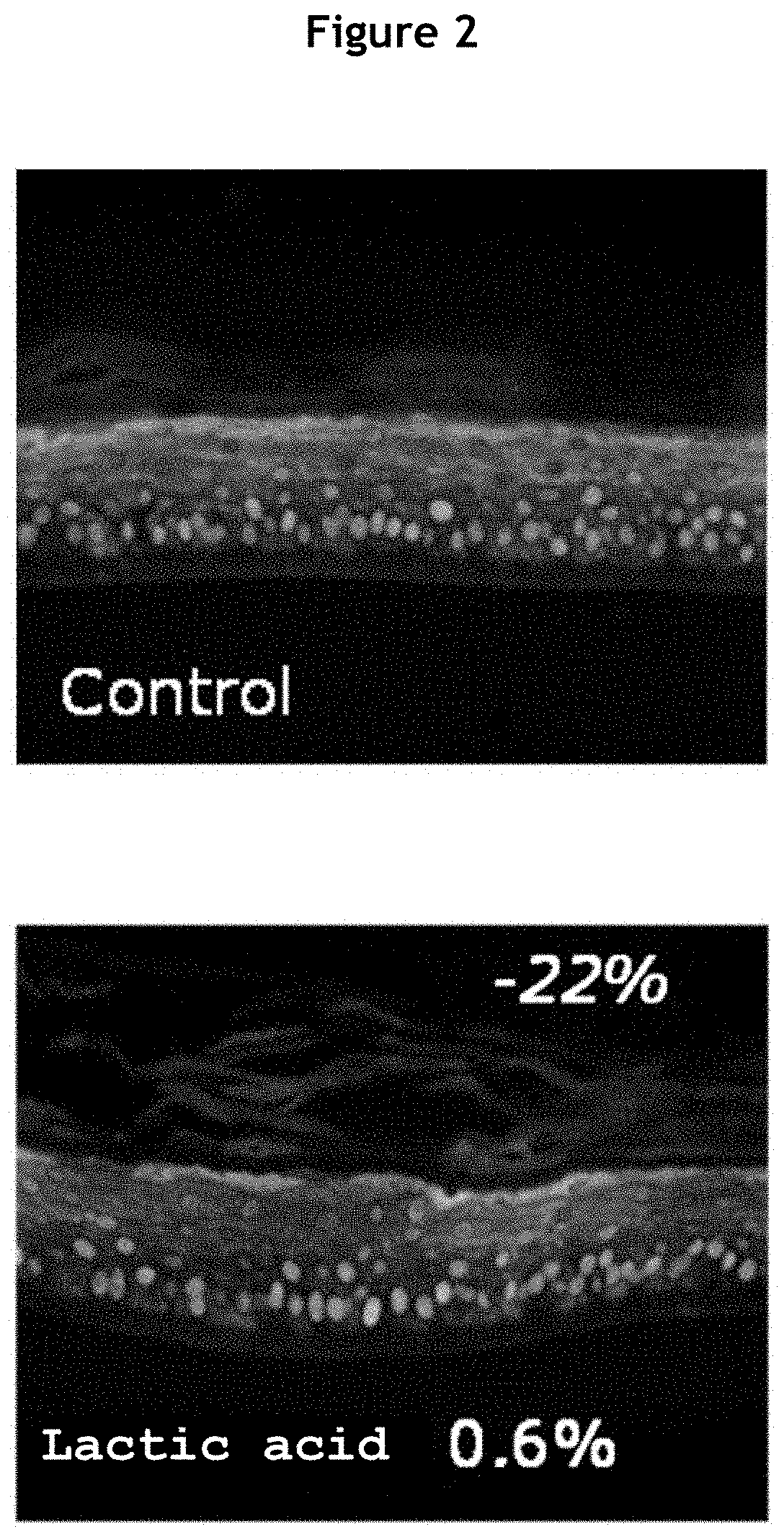Models of Reconstructed Sensitive Skin
a skin model and skin technology, applied in the field of models of reconstructed sensitive skin, can solve the problems of lack of studies able to demonstrate any difference, histological or physiological, abnormal or deficient skin functions in subjects with sensitive skin, and factors mediated by sensitive skin syndrome have not been identified today
- Summary
- Abstract
- Description
- Claims
- Application Information
AI Technical Summary
Benefits of technology
Problems solved by technology
Method used
Image
Examples
example 1
Characterization of the Cellular, Molecular and Physiological Aspects of Sensitive Skin: Clinical Study
[0212]A clinical study was evaluated on a panel of 97 subjects, including 77 children.
[0213]Subjects were interviewed using a questionnaire to classify them into two categories: sensitive skin or normal skin. The results of this ranking are described in Table 1.
TABLE 1Ranking of the different subjects recruited forthe clinical study, according to their age.Number of subjects (male / female)Age groupNormal skinSensitive skin3-6monthsN = 15 (6 / 9)N = 12 (8 / 4)6-12monthsN = 11 (5 / 6)N = 11 (4 / 7)24-48months N = 18 (7 / 11)N = 10 (6 / 4)18-20years oldN = 10 (4 / 6)N = 10 (4 / 6)
[0214]A clinical evaluation was performed on different parts of each subject's face and body. The scaling, roughness, redness and cracks (SRRC) criteria and the overall dry skin score (ODS) criteria including the evaluation of skin dryness, were measured. This clinical evaluation showed that sensitive skin is generally more s...
example 2
Development and Validation of a Model of Reconstructed Sensitive Skin
[0219]I. Materials and Methods
[0220]a. Model Implemented—Induction of Lactic Acid Stress
[0221]Reconstructed human epidermises were obtained from the keratinocytes of a 19-year-old donor using the method derived from Poumay et al. (Arch Dermatol Res 2004; 296:203-11). After 2 days of immersion culture, the reconstructed human epidermises were cultured at the air / liquid interface for 10 days.
[0222]Epidermises at differentiation day 10 was treated topically with 0.6% lactic acid solution at 50 μL / epidermis and incubated for 48 hours, with re-treatment at 24 hours. At the end of the incubation, different parameters were measured to evaluate the effect of lactic acid on the reactivity of the epidermises.
[0223]b. Evaluation of the Viability of the Epidermises
[0224]The viability of the epidermises was assessed by an MTT metabolism test (n=2). The optical density (OD) at 540 nm is proportional to the amount of living cells...
example 3
Evaluation of the Effectiveness of Active Ingredients in the Reconstructed Sensitive Skin Model (Presented in Example 2)
[0258]I. Materials and Methods
[0259]a. Compounds Evaluated—Dermocosmetic Active Ingredients
[0260]The ingredients described below were evaluated in the reconstructed Sensitive Skin model obtained from Example 2 described above. The ingredients tested are cosmetic active ingredients with recognized anti-inflammatory properties.[0261]Cycloceramide (OX100) [Laboratoires Expanscience]: tested at 10 and 100 μM
[0262]Cycloceramide is an active ingredient obtained by synthesis. It is a PKC inhibitor with anti-inflammatory properties (EP 2 266 530 B1; WO2006 / 11443 A1; WO 03 / 055463 A1; Piccardi et al., 2005, JID, vol 124, no. 4, suppl, abstract 216; Staquet et al., Int Arch Allergy Immunology, 2004, April; 133(4):348-56).[0263]Peptide and sugar extract of Schizandra (SC) [Laboratoires Expanscience—trade name Sweetone®]: tested at 0.05% and 0.1%
[0264]This extract has anti-infl...
PUM
 Login to View More
Login to View More Abstract
Description
Claims
Application Information
 Login to View More
Login to View More - R&D
- Intellectual Property
- Life Sciences
- Materials
- Tech Scout
- Unparalleled Data Quality
- Higher Quality Content
- 60% Fewer Hallucinations
Browse by: Latest US Patents, China's latest patents, Technical Efficacy Thesaurus, Application Domain, Technology Topic, Popular Technical Reports.
© 2025 PatSnap. All rights reserved.Legal|Privacy policy|Modern Slavery Act Transparency Statement|Sitemap|About US| Contact US: help@patsnap.com


